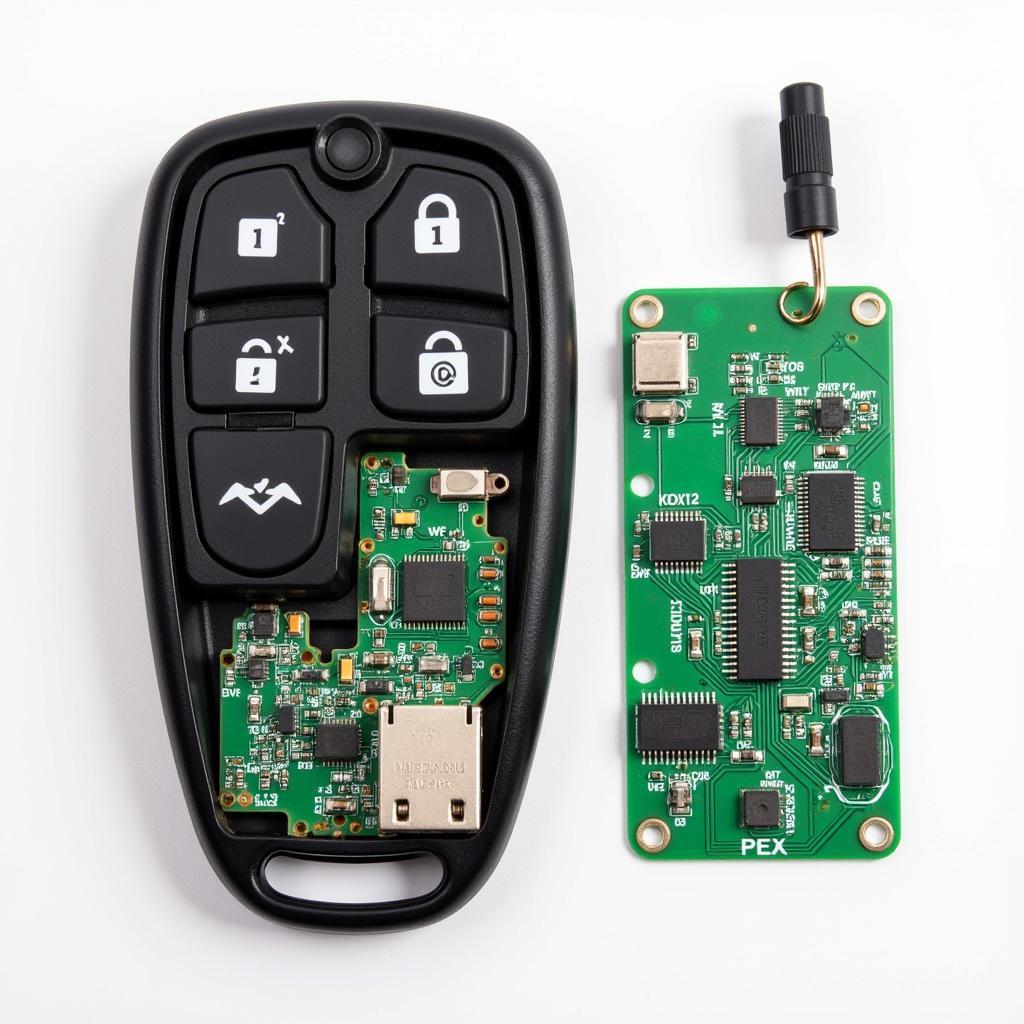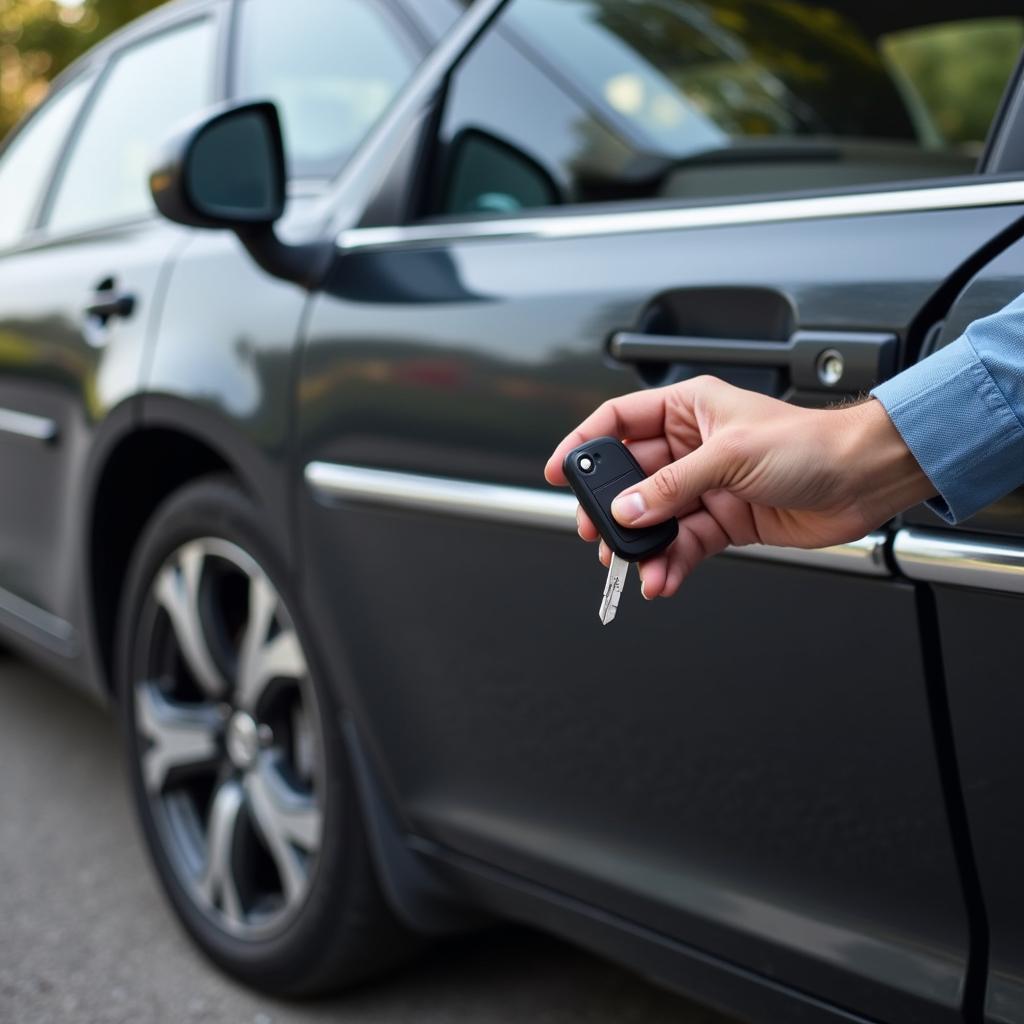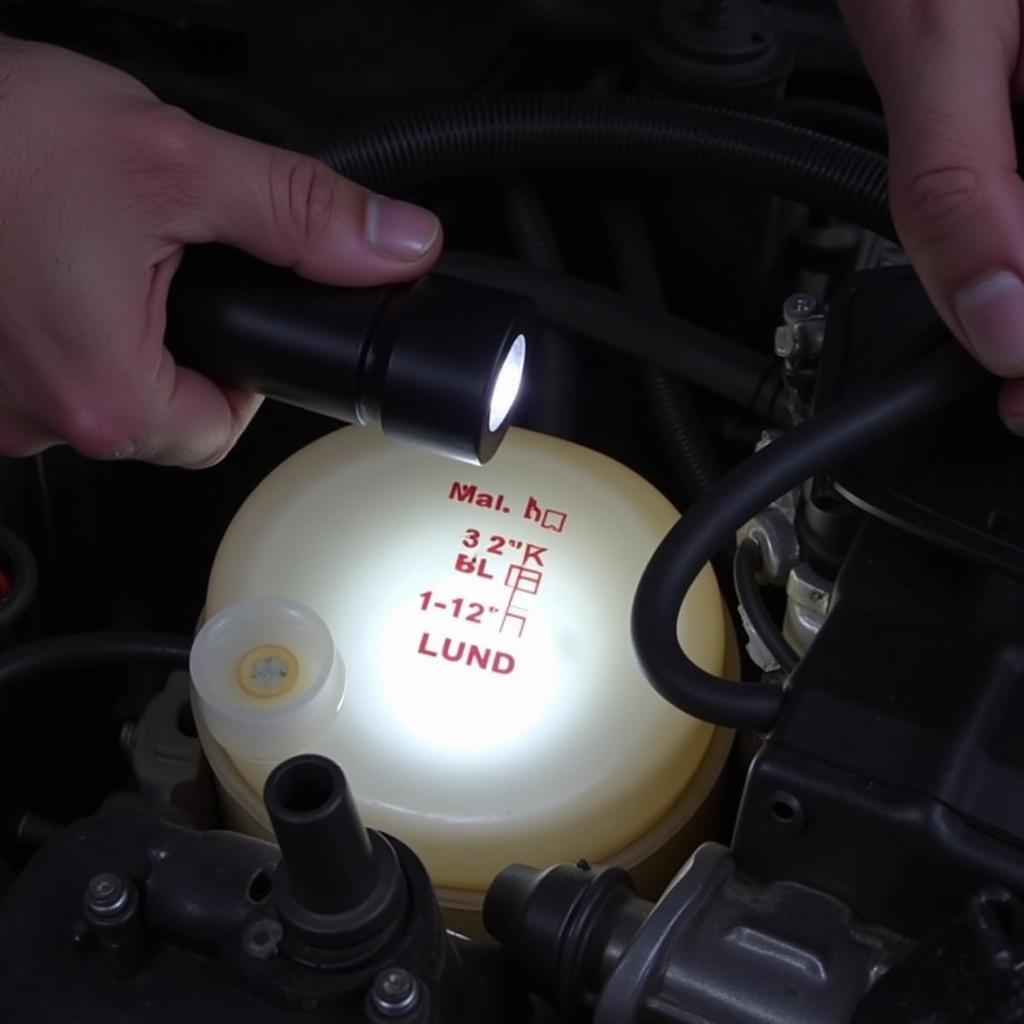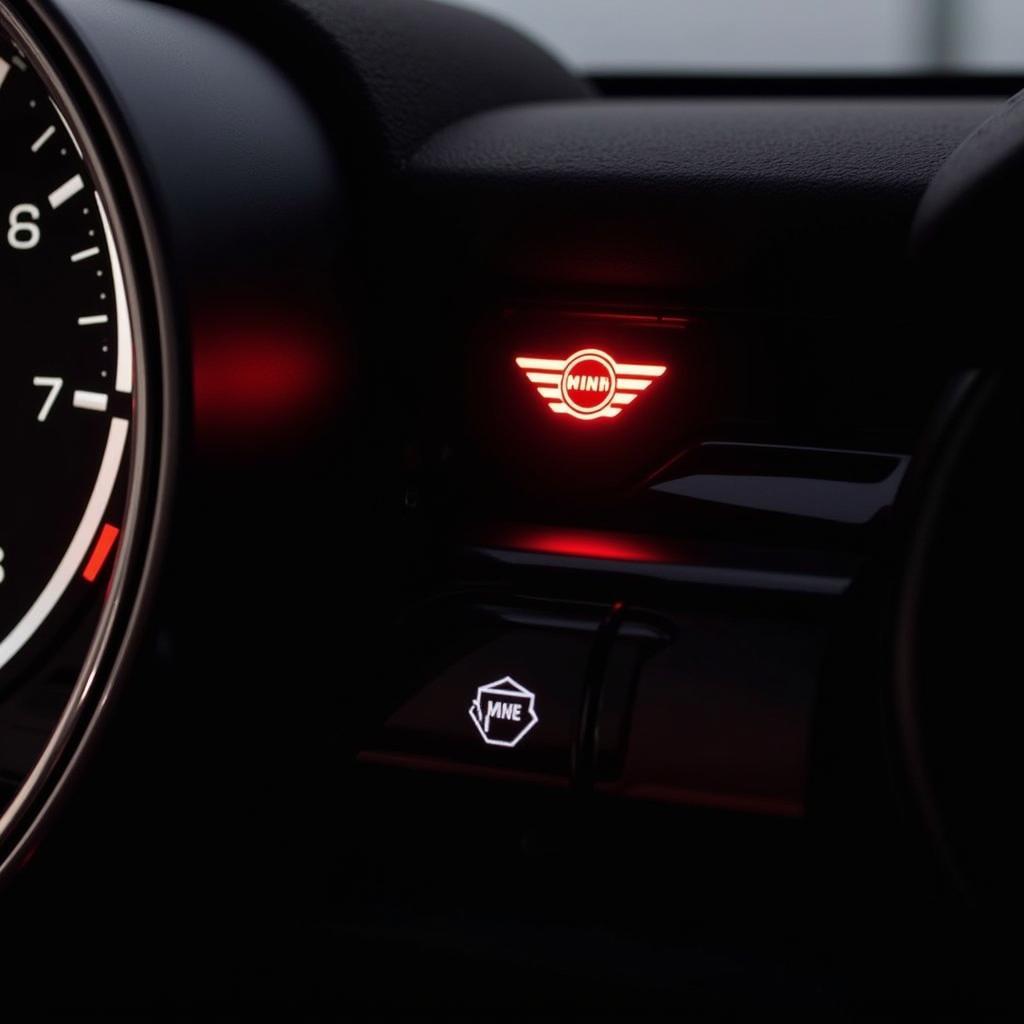A key fob is more than just a convenient way to lock and unlock your car. It’s a sophisticated piece of key fob hardware packed with technology that communicates with your vehicle. Understanding this technology is crucial for troubleshooting issues and ensuring your key fob continues to function reliably. Let’s delve into the inner workings of your key fob and explore common problems, solutions, and preventative measures.
 Key Fob Internal Components
Key Fob Internal Components
Decoding the Key Fob Hardware
Modern key fobs use radio frequencies to communicate with your car. Inside the key fob hardware, you’ll find a small computer chip, a battery, an antenna, and buttons. When you press a button, the chip sends a coded signal through the antenna to a receiver in your car. This signal instructs your car to perform a specific action, like locking or unlocking the doors or starting the engine.
If you’re looking to upgrade your car’s audio system, check out our guide on how to add bluetooth to any car radio.
Key Fob Hardware Components Explained
- Microchip: The brain of the operation, the microchip stores the unique code that identifies your key fob to your car. This ensures only your key fob can control your car.
- Battery: Powers the microchip and antenna. A weak battery is a common culprit for key fob malfunctions.
- Antenna: Transmits the signal from the microchip to the car’s receiver.
- Buttons: Trigger the microchip to send specific commands, such as lock, unlock, panic, and remote start.
Common Key Fob Hardware Problems and Solutions
Key fobs, like any electronic device, can experience issues. Understanding common problems and their solutions can save you time and money.
Why is my key fob not working?
This is a frequent question with various possible answers. It could be a dead battery, a damaged antenna, a faulty microchip, or even a problem with your car’s receiver.
How do I fix a broken key fob?
Troubleshooting a malfunctioning key fob involves a systematic approach:
- Check the Battery: The most common issue. Replace the battery and see if the problem is resolved.
- Inspect the Key Fob Hardware: Look for any physical damage like cracks, broken buttons, or a damaged antenna.
- Try Reprogramming the Key Fob: Consult your owner’s manual or a professional for instructions on reprogramming.
- Check the Car’s Receiver: If the problem persists, the issue might lie with your car’s receiver, requiring professional diagnosis.
You can even turn any car radio into bluetooth-compatible with the right tools and knowledge.
Preventing Key Fob Hardware Issues
Protecting your key fob hardware can extend its lifespan and minimize issues. Avoid dropping the key fob, exposing it to extreme temperatures, or submerging it in water. Keeping it away from strong magnetic fields can also help prevent damage.
 Car Key Fob and Car
Car Key Fob and Car
Key Fob Hardware: The Future
Key fob technology continues to evolve. Features like proximity sensors and smartphone integration are becoming increasingly common. This provides even greater convenience and security.
For seamless Bluetooth integration, explore options on how to make any usb enabled car radio into bluetooth. Alternatively, if you’re considering a full radio replacement, you can find a radio that fit any car with bluetooth.
Quote from John Smith, Senior Automotive Electrical Engineer: “Key fobs have become integral to the modern driving experience, and understanding their inner workings is key to maintaining their functionality.”
Conclusion
Key fob hardware, though small, plays a critical role in the operation of your vehicle. Understanding its components, common issues, and preventive measures ensures a smooth and hassle-free experience. By taking proactive steps, you can keep your key fob functioning reliably for years to come. If you’re wondering, “can you put a bluetooth radio in any car?” the answer is often yes.



